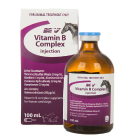
Cushing’s Disease
Cushing’s disease, or hyperadrenocorticism, is an adrenal disorder that affects the pet’s entire body. Common symptoms include thinning skin and loss of hair. In addition, Cushing’s disease can cause your pet’s immune system to work inefficiently, its liver to swell, and its blood pressure to rise. Muscle weakness, testicular shrinkage, and facial nerve palsy often commonly occur in pets with Cushing’s disease. If your pet has Cushing’s disease it might excessively pant and develop pimples throughout its body. Fortunately, Cushing’s disease treatable.
With most pets, Cushing’s disease is caused by steroid medication that is prescribed to the pet to control inflammation. When Cushing’s disease is caused by steroids, it is referred to as iatrogenic Cushing’s disease. Cushing’s disease caused by steroids is simple to treat because it simply requires no longer giving steroids to the pet.
In addition to steroids, Cushing’s disease can also be caused by brain or adrenal dysfunction. With some pets, this is caused by a problem with the pituitary gland, which is a gland located in the brain and behind the eyes. In a pet with Cushing’s disease, the pituitary gland begins secreting too much hormone. Sometimes, this is because it receives the wrong message from other parts of the brain. It can, however, occur for no apparent reason. As a result, the adrenal glands are overly stimulated. Often, cancer of the adrenal glands can lead to Cushing’s disease.
Some pets are also more prone to Cushing’s disease because of genetic predisposition. Poodles, terriers, and dachshunds are particularly susceptible to Cushing’s disease. It is possible for cats to develop Cushing’s disease, but no breed experiences it more than others.

Addison’s Disease
Addison’s disease is caused by a deficiency of either cortisol or aldosterone, though the deficiency can sometimes be in both of these hormones. This deficiency causes the levels of potassium and sodium levels to become abnormal, which can be fatal to your pet.
There are two primary causes of Addison’s disease: a faulty pituitary gland or faulty adrenal glands. A pet with Addison’s disease experiences problems with regulating its heartbeat, blood pressure, and kidney filtration. Physical side effects pet owners should look out for include shaking, dehydration, vomiting, and general weakness. To prevent death, your pet needs to be treated with fluids and with cortisol.
Cats and dogs can both be affected by Addison’s disease, but no specific breed of cat is more susceptible to the disease. Certain dog breeds, such as Great Danes, Wheaten Terriers, Rottweilers, Portuguese Water Dogs, Standard Poodles, and West Highland White Terriers, however, are more likely to develop the disease than other dog breeds.



